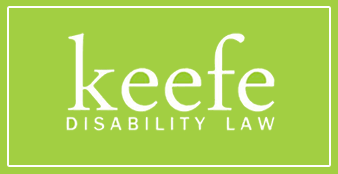 Cancer is a constant threat to people worldwide. Unfortunately, medical science is still reliant on prevention rather than a cure for most types of cancers. Simply knowing your level of risk and making a few simple changes can go a long way toward cancer prevention, especially when it comes to cancers of the skin.
Cancer is a constant threat to people worldwide. Unfortunately, medical science is still reliant on prevention rather than a cure for most types of cancers. Simply knowing your level of risk and making a few simple changes can go a long way toward cancer prevention, especially when it comes to cancers of the skin.
Skin Type Is a Major Factor of Skin Cancer Risk
Skin cancer is most commonly caused by ultraviolet (UV) radiation, which can damage skin cells and cause irregular growth. Sunlight is the primary source of UV radiation for all people, and repeated and lengthy exposure to the sun is the leading cause of skin cancer.
Certain types of skin are more susceptible to sun damage, so your skin type is one of the biggest factors in determining skin cancer risk. Generally, people who have more pigmentation in their skin will have more natural protection from the sun, and those who are pale or light-skinned will have less protection. Determining which skin type you have can help you take proper precautions when you are out in the sun.
The six skin phototypes (from light to dark) include:
- Type I: Skin always burns (usually with little exposure) and never tans in the sun.
- Type II: Skin usually burns and rarely ever tans.
- Type III: Skin sometimes burns and sometimes tans.
- Type IV: Skin tans easily and does not often burn.
- Type V: Skin always tans and rarely burns.
- Type VI: Skin never burns in the sun.
People with skin types I, II, and III are at the highest risk of developing skin cancer. These people are more likely to have pale skin, fair complexions, freckles, or skin that turns red with just a few minutes of exposure. Not only are these skin types more susceptible to basal cell carcinoma and squamous cell carcinoma, they are more likely to suffer a life-threatening melanoma. These people should always wear a sunscreen with a minimum 30 SPF, wear protective clothing, and stay in the shade as often as possible when outdoors.
While people with skin types IV, V, and VI are at lower risk of skin cancer, they can still develop the condition if they are continually exposed to UV light. They are also more likely than others to develop acral lentiginous melanoma, which commonly appears on parts of the body that are not exposed to the sun.
Genetic and Behavioral Risks for Skin Cancer
In addition to skin type, people who live in certain areas and have specific characteristics are more likely than others to develop skin cancer. Some common risk factors include:
- History of cancer. A person who has been previously diagnosed with skin cancer is more likely to have the condition recur, and people with a family history of skin cancer are at higher risk of diagnosis.
- Eye and hair color. Fair hair, especially blond or red hair, is associated with higher skin cancer risk, as are blue or green eyes.
- Moles and skin changes. Moles can be an indicator of skin cancer, especially if they are irregular or occur in large numbers. It is vital to perform mole checks for skin cancer at least once a month, and have a yearly skin examination by a medical professional.
- A history of sunburns. People who suffered many sunburns in early life or were exposed to high levels of sunlight in childhood may be at higher risk.
- Location. People who live in warm, sunny places are at higher risk of skin cancer. Southern states pose a higher risk of skin cancer than those with dark winters, and Australia has the highest rate of skin cancer in the world.
- Workplace and hobbies. Any activities that require a lot of time outdoors can increase skin cancer risk. Construction workers, lifeguards, surfers, and farm workers are all exposed to the sun for hours at a time. Industrial workers who are exposed to arsenic, coal, tar, and paraffin have also been shown to be at increased risk of skin cancers.
- Indoor tanning. High levels of UV light that cause skin cancer usually come from the sun, but can also be a result of indoor tanning beds. Indoor tanning lamps are a powerful source of UV radiation, and can cause cancer even if the person is rarely exposed to outdoor sunlight.
If you have been diagnosed with skin cancer, you may be eligible for Social Security disability benefits. Please contact our law firm today to get started on your disability application, or download our free report, Five Most Frequently Asked Questions about Social Security Disability.
Are You Looking for a Social Security Disability Attorney in Boston, MA?
If you are looking to apply for social security disability, you need to speak with an experienced social security disability lawyer as soon as possible. Please contact us online or call our Natick Office directly at 508.283.5500 to schedule your free consultation.
| Related Links: |

